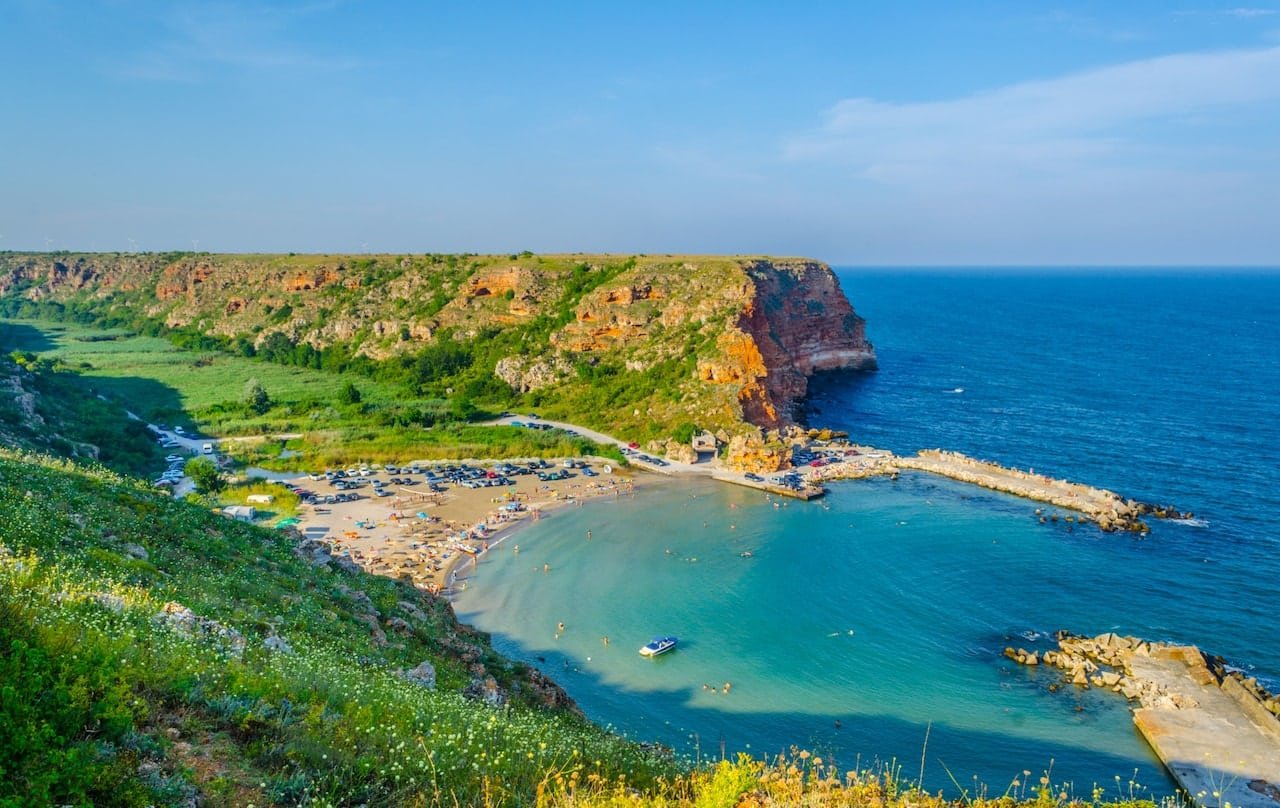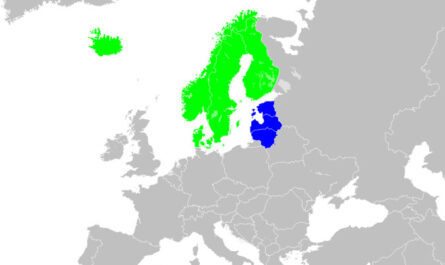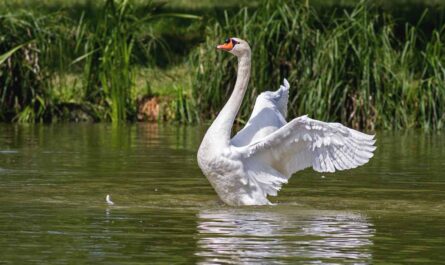What are some of the interesting facts about Bulgaria? The capital city, Sofia, embodies Bulgaria’s blend of ancient and modern. Here, Byzantine churches stand alongside Soviet-era buildings, and vibrant markets bustle with local produce and crafts. Beyond Sofia, Bulgaria’s natural beauty unfolds with rugged mountains, lush valleys, and picturesque coastlines along the Black Sea. The Rhodope Mountains, known for their folklore and traditional music, offer outdoor enthusiasts opportunities for hiking, skiing, and exploring caves. In this article, I will talk about some interesting facts about Bulgaria. Keep reading.
Culturally, Bulgaria boasts a rich heritage of Thracian, Slavic, and Ottoman influences, reflected in its music, dance, and festivals like the lively Kukeri processions. Traditional Bulgarian cuisine, with its hearty stews, grilled meats, and delicate pastries, provides a taste of local flavors that complement the warmth and hospitality of its people. Whether delving into its history, exploring its landscapes, or savoring its cuisine, Bulgaria welcomes visitors with a unique blend of old-world charm and contemporary allure.
Interesting Facts About Bulgaria: History, Culture, Travel
Bulgaria, situated in Southeast Europe, captivates visitors with its rich history, diverse culture, and stunning landscapes. Nestled on the eastern Balkan Peninsula, this country borders Romania to the north, Serbia and North Macedonia to the west, Greece and Turkey to the south, and the Black Sea to the east. Its strategic location has shaped Bulgaria’s history as a crossroads of civilizations, leaving a mosaic of influences on its traditions, architecture, and cuisine. Here are some interesting facts about Bulgaria:
1. Land of Diverse Landscapes
Bulgaria, nestled in Southeast Europe, captivates with its diverse landscapes that span from rugged mountains to sun-kissed coastlines and fertile plains. The country’s stunning mountains, including the Balkan Mountains and the Rila, Pirin, and Rhodope ranges, offer spectacular vistas and opportunities for hiking, skiing, and mountaineering. The Black Sea coastline, stretching along Bulgaria’s eastern border, boasts sandy beaches, picturesque resorts, and historic towns like Varna and Burgas.
Inland, the Thracian Plain unfolds with its expansive agricultural fields and vineyards, while the Valley of the Roses near Kazanlak bursts into vibrant blooms each June, filling the air with the fragrance of roses used in perfume production. Bulgaria’s varied landscapes not only attract nature lovers and outdoor enthusiasts but also contribute to the country’s rich biodiversity, cultural heritage, and agricultural productivity.
2. Ancient History
Bulgaria’s rich history is a tapestry woven with influences from ancient civilizations that have left enduring marks on its cultural landscape. The Thracians, an ancient Indo-European people, inhabited the region from antiquity, leaving behind treasures like the Thracian tombs at Kazanlak and Sveshtari, recognized as UNESCO World Heritage sites. Greek colonization brought cities like Apollonia and Byzantium to the shores of the Black Sea, while Roman rule saw the construction of impressive monuments such as the Roman amphitheater in Plovdiv, one of Europe’s oldest continuously inhabited cities.
Byzantine influence is evident in Bulgaria’s medieval art and architecture, notably preserved in the frescoes of churches like Boyana Church in Sofia. The Ottoman Empire’s centuries-long rule left a lasting imprint on Bulgarian culture, religion, and architecture, visible in mosques, hammams (bathhouses), and Ottoman-style houses found throughout the country. Bulgaria’s ancient history is a testament to its strategic location at the crossroads of civilizations, shaping its identity and cultural heritage through millennia of interactions and exchanges.
3. Sofia: The Bustling Capital
Sofia, Bulgaria’s vibrant capital city, blends a rich tapestry of history, culture, and modernity against the backdrop of stunning mountain vistas. Founded over 7,000 years ago, Sofia boasts a wealth of historical landmarks, including Roman ruins like the ancient Serdica complex and the impressive Roman amphitheater. Ottoman mosques such as the Banya Bashi Mosque and the elaborately decorated Sofia Synagogue reflect the city’s diverse religious heritage.
Architectural styles range from Neo-Renaissance and Art Nouveau to Soviet-era buildings, showcasing Sofia’s evolution into a bustling metropolis with cosmopolitan charm. The city’s cultural scene thrives with theaters, galleries, and museums like the National Historical Museum and the National Art Gallery, housing collections that span Bulgaria’s ancient, medieval, and modern history. Sofia’s dynamic atmosphere is complemented by bustling markets, trendy cafes, and green spaces like Borisova Gradina park, offering residents and visitors alike a vibrant urban experience infused with historical depth and contemporary allure.
4. The Rila Monastery: A Spiritual Gem
The Rila Monastery, nestled in the Rila Mountains south of Sofia, stands as a beacon of Bulgarian spirituality, cultural heritage, and artistic achievement. Founded in the 10th century by Saint Ivan of Rila, Bulgaria’s patron saint, the monastery has evolved into the largest Eastern Orthodox monastery in the country and a UNESCO World Heritage site. Its striking architectural ensemble features a central church adorned with colorful frescoes depicting biblical scenes, saints, and intricate floral motifs that exemplify Bulgarian medieval artistry.
The monastery’s iconostasis, carved wooden doors, and illuminated manuscripts further illuminate its significance as a center of religious devotion and artistic expression. The monastery complex includes residential quarters for monks, a museum displaying religious artifacts and historical treasures, and serene courtyards framed by the surrounding forested peaks. Pilgrims and tourists alike visit the Rila Monastery to experience its spiritual tranquility, admire its architectural splendor, and delve into Bulgaria’s Orthodox Christian heritage amidst the serene beauty of the Rila Mountains.
5. Valley of the Roses
Bulgaria’s Valley of the Roses, located near Kazanlak in central Bulgaria, unfolds like a fragrant tapestry each June when fields of delicate Rosa damascena roses bloom in a riot of color and scent. Known as the “Bulgarian Rose Valley,” this region is renowned for producing the finest rose oil in the world, extracted from the petals of the Damask rose through a traditional distillation process. The annual rose harvest is celebrated with lively festivals that honor Bulgaria’s centuries-old rose-growing tradition, featuring parades, folk music, and dance performances that highlight local culture and craftsmanship.
The rose oil, prized for its aromatic properties and therapeutic benefits, is a key ingredient in perfumery, cosmetics, and traditional Bulgarian remedies. The Valley of the Roses not only showcases Bulgaria’s agricultural heritage and natural beauty but also serves as a cultural landmark that fosters community pride and economic vitality through sustainable rose cultivation and tourism initiatives.
6. Nessebar: A UNESCO Treasure
Nessebar, a picturesque ancient town nestled on Bulgaria’s Black Sea coast, holds the prestigious title of a UNESCO World Heritage Site, celebrated for its rich history and architectural treasures. The town’s origins date back to antiquity, with remnants that trace its heritage through Thracian, Greek, Roman, and Byzantine civilizations. Nessebar’s historic core is a labyrinth of narrow cobblestone streets lined with well-preserved churches, medieval fortifications, and traditional Bulgarian houses adorned with wooden balconies.
The town’s Byzantine-era churches, such as the Church of Saint Sophia and the Church of Saint Stephen, feature exquisite frescoes and architectural details that reflect centuries of cultural exchange and artistic expression. Overlooking the shimmering Black Sea, Nessebar is a testament to Bulgaria’s enduring cultural legacy, offering visitors a captivating journey through time amidst its ancient ruins and scenic coastal views.
7. Bulgarian Yogurt: A National Treasure
Bulgarian yogurt, renowned for its distinctive flavor, creamy texture, and probiotic health benefits, holds a cherished place in Bulgarian cuisine and culture. Made from fermented milk using a unique strain of Lactobacillus bulgaricus bacteria indigenous to the region, Bulgarian yogurt has a slightly tart taste and smooth consistency that sets it apart from other yogurts worldwide. This ancient dairy product has been part of Bulgarian culinary traditions for centuries, valued not only for its delicious taste but also for its digestive health benefits and nutritional value.
Traditionally enjoyed plain or with honey and fruit, Bulgarian yogurt is also a versatile ingredient in dishes like tarator (cold cucumber soup) and shopska salad, adding a creamy richness to local specialties. Its reputation as a probiotic powerhouse has made Bulgarian yogurt a sought-after export, promoting wellness and gastronomic delight beyond Bulgaria’s borders while preserving a cultural heritage deeply rooted in the country’s pastoral traditions.
8. The Cyrillic Alphabet
Bulgaria proudly embraces the Cyrillic alphabet as its official script, a distinctive writing system derived from the Glagolitic alphabet created by Saints Cyril and Methodius in the 9th century. Named in honor of Saint Cyril, who played a pivotal role in the spread of Christianity and literacy among Slavic peoples, the Cyrillic alphabet became the foundation of Bulgaria’s linguistic and cultural identity.
Its adoption facilitated the translation of religious texts, literature, and administrative documents, fostering a rich literary tradition that flourished during Bulgaria’s medieval period and continues to thrive today. The Cyrillic script, with its unique combination of consonants, vowels, and diacritical marks, is used for writing Bulgarian and other Slavic languages, symbolizing Bulgaria’s enduring cultural ties to Orthodox Christianity and its commitment to preserving linguistic heritage through education, literature, and media.
9. Kiten and Albena: Seaside Resorts
Kiten and Albena epitomize Bulgaria’s allure as a seaside destination, offering pristine beaches, crystal-clear waters, and a vibrant ambiance that captivates visitors seeking sun, relaxation, and entertainment along the Black Sea coast. Kiten, nestled between the Strandzha Mountains and the sea, enchants with its tranquil coves, water sports facilities, and scenic coastal trails that invite exploration of Bulgaria’s natural beauty. Albena, renowned for its expansive sandy beach and family-friendly amenities, features luxurious hotels, restaurants, and a bustling nightlife scene that beckons vacationers seeking leisure and excitement.
Both resorts boast a wealth of recreational activities, from sailing and windsurfing to beach volleyball and seaside promenades lined with shops and cafes. Whether unwinding on sun-kissed sands or exploring the region’s cultural attractions, Kiten and Albena offer a quintessential Bulgarian seaside experience that combines relaxation, adventure, and scenic splendor against the backdrop of the Black Sea’s azure waters.
10. Pirin Mountains: A Paradise for Hikers
The Pirin Mountains, a majestic range in southwestern Bulgaria, allure hikers and nature enthusiasts with their rugged peaks, verdant valleys, and pristine glacial lakes that form a breathtaking alpine landscape. Designated a UNESCO World Heritage site for its ecological significance and natural beauty, the Pirin Mountains boast Bulgaria’s second-highest peak, Mount Vihren, towering at 2,914 meters (9,560 feet) above sea level. The region’s diverse flora and fauna include rare plant species, endemic wildlife such as chamois and bears, and bird species that thrive in its protected alpine habitats.
Hiking trails traverse the Pirin National Park, offering adventurers a chance to explore ancient pine forests, cascading waterfalls like the Popinolashki Falls, and panoramic vistas from rocky summits. In winter, the Pirin Mountains transform into a skiing paradise with well-groomed slopes and modern resorts like Bansko, attracting winter sports enthusiasts from around the globe. Whether trekking through pristine wilderness or skiing amid snow-capped peaks, the Pirin Mountains offer an unforgettable outdoor adventure amid Bulgaria’s natural splendor.
11. Thracian Tombs: Unveiling the Past
Scattered across Bulgaria’s landscape, Thracian tombs such as the famed Kazanlak Tomb serve as poignant testaments to the ancient Thracian civilization’s beliefs and practices. Dating back millennia, these burial sites are architectural marvels adorned with intricate frescoes that depict scenes of daily life, mythology, and spiritual beliefs of the Thracian people.
The Kazanlak Tomb, a UNESCO World Heritage site, exemplifies Thracian artistry with its vibrant murals and ornate burial chambers, offering archaeologists and visitors alike a rare glimpse into the cultural and religious traditions of this enigmatic civilization. These tombs, often discovered in strategic locations like valleys or hillsides, underscore Bulgaria’s rich archaeological heritage and the enduring legacy of the Thracians, who once thrived in these lands and left behind a legacy steeped in mystery and artistic prowess.
12. Folk Music and Dances
Bulgaria’s cultural tapestry is woven with a vibrant tradition of folk music and dances that reflect the country’s diverse regional identities and historical influences. Bulgarian folk music, characterized by its unique rhythms and haunting melodies, is performed with traditional instruments such as the kaval (wooden flute), gaida (bagpipe), and tambura (lute). Vocal polyphony, known as “Bulgarian singing,” showcases intricate harmonies and dissonances that evoke emotions ranging from joyous celebration to solemn reflection.
Accompanying these musical traditions are lively folk dances like the horo, a circle dance performed at weddings and festivals, and the rachenitsa, known for its complex footwork and dynamic tempo changes. Folk music and dances serve as expressions of communal identity and cultural pride, celebrating Bulgaria’s rural heritage and resilience through centuries of political and social change. Today, these traditions thrive in festivals, concerts, and community gatherings, preserving Bulgaria’s folkloric legacy while captivating audiences with their infectious energy and cultural significance.
13. Kukeri Rituals: Warding Off Evil Spirits
In Bulgaria, the ancient Kukeri rituals form a colorful and symbolic tradition celebrated during winter festivals to ward off malevolent forces and herald the arrival of spring. Kukeri, masked dancers adorned in elaborate costumes made of animal hides, bells, and vibrant textiles, parade through villages and towns to banish evil spirits and ensure fertility and prosperity for the community.
The ritualistic dances and rhythmic movements of the Kukeri, accompanied by the clanging of bells and rhythmic drumming, create a cacophony believed to scare away winter’s darkness and invite the rebirth of nature. Each region in Bulgaria boasts its own variations of the Kukeri rituals, reflecting local folklore, customs, and beliefs passed down through generations. These festive gatherings not only unite communities in shared rituals of protection and renewal but also underscore Bulgaria’s cultural resilience and the enduring significance of ancient rites in contemporary society.
14. Ottoman Legacy
Bulgaria’s cultural mosaic bears enduring traces of Ottoman rule, which spanned over five centuries and left a profound imprint on the country’s architecture, cuisine, and traditions. Ottoman architecture is prominently displayed in Bulgaria’s cities and towns, with mosques like Sofia’s Banya Bashi Mosque and Plovdiv’s Djumaya Mosque featuring distinctive minarets and ornate interiors adorned with calligraphy and geometric motifs.
The Ottoman culinary legacy is celebrated in Bulgaria’s diverse cuisine, with dishes like kebapche (grilled minced meat), baklava (sweet pastry), and tarator (cold yogurt soup) reflecting a fusion of Turkish and Bulgarian culinary traditions. Handicrafts such as carpet weaving, copperware, and pottery bear Ottoman influences, showcasing intricate craftsmanship and artistic heritage passed down through generations. Bulgaria’s Ottoman legacy is not merely a historical artifact but a vibrant cultural thread that enriches the country’s identity, fostering cultural diversity and intercultural dialogue within its borders and beyond.

15. Bulgarian Wine: A Growing Industry
Bulgaria’s millennia-old tradition of winemaking is experiencing a renaissance, as the country’s wineries gain international acclaim for their quality wines and diverse varietals. Located in the fertile valleys and rolling hillsides of regions like the Thracian Valley and the Danubian Plain, Bulgaria’s vineyards benefit from a continental climate and rich soils conducive to grape cultivation. Indigenous grape varieties such as Mavrud, Rubin, and Melnik thrive alongside international varietals like Cabernet Sauvignon, Merlot, and Chardonnay, producing wines that embody Bulgaria’s terroir and winemaking expertise.
The revival of Bulgaria’s wine industry is marked by modern viticultural practices, state-of-the-art winemaking facilities, and a commitment to sustainable agriculture that preserves the country’s natural landscapes and biodiversity. Visitors and wine enthusiasts flock to Bulgaria’s wine regions to explore vineyards, sample award-winning wines at tastings, and immerse themselves in the country’s vinicultural heritage. As Bulgaria’s wines garner recognition on the global stage, they contribute to the country’s economic growth, cultural pride, and status as a premier wine destination in Southeastern Europe.
16. National Parks
Bulgaria’s commitment to environmental conservation is showcased through its diverse national parks, which encompass a range of ecosystems from rugged mountains to pristine coastlines. Pirin National Park, a UNESCO World Heritage site, protects the Pirin Mountains’ glacial lakes, rare flora, and endangered species like the Balkan chamois. Rila National Park, home to Bulgaria’s highest peak, Mount Musala, features ancient forests, alpine meadows, and the sacred Rila Monastery.
Strandzha Nature Park, nestled along the Black Sea coast, preserves unique biodiversity with its dense forests, wetlands, and archaeological sites dating back to antiquity. These national parks not only offer outdoor enthusiasts opportunities for hiking, wildlife spotting, and photography but also serve as havens for scientific research and environmental education, highlighting Bulgaria’s natural beauty and commitment to sustainable tourism.
17. Festivals and Celebrations
Bulgaria’s rich cultural heritage comes alive throughout the year with a vibrant calendar of festivals and celebrations that showcase music, dance, folklore, and regional traditions. The Kukeri Festival, held in villages across Bulgaria during winter, features masked dancers performing rituals to dispel evil spirits and ensure a prosperous year ahead. The Rose Festival in Kazanlak celebrates the Valley of the Roses’ blooming season with parades, concerts, and traditional rituals honoring Bulgaria’s centuries-old rose oil production.
Music enthusiasts flock to the Bansko Jazz Festival, where international and local artists perform against the backdrop of the Pirin Mountains, blending jazz with Bulgarian folk influences. Other notable events include the National Festival of Bulgarian Folklore in Koprivshtitsa, offering authentic folk music and dance performances, and the Plovdiv International Fair, showcasing Bulgaria’s economic and cultural achievements. These festivals not only celebrate Bulgaria’s cultural diversity but also invite visitors to immerse themselves in the country’s lively traditions and hospitality.
18. Sunsets on the Black Sea
The Bulgarian Black Sea coast offers enchanting sunsets that paint the sky with vibrant hues, casting a mesmerizing glow over the horizon and reflecting off the tranquil waters. Whether viewed from bustling seaside resorts like Sunny Beach or tranquil coastal towns like Sozopol, sunsets on the Black Sea captivate visitors with their natural beauty and romantic ambiance.
As the sun dips below the horizon, casting silhouettes of fishing boats and distant islands, locals and tourists alike gather along sandy beaches and waterfront promenades to witness nature’s spectacle unfold. The combination of clear skies, gentle sea breezes, and panoramic views makes sunset-watching a cherished pastime along Bulgaria’s coast, offering moments of serenity and reflection amidst the region’s bustling resort life and cultural attractions.
19. Affordable Travel Destination
Bulgaria has emerged as a popular and affordable travel destination within Europe, offering visitors exceptional value for money without compromising on cultural experiences or natural beauty. From cosmopolitan cities like Sofia and Plovdiv to historic towns like Veliko Tarnovo and Nessebar, Bulgaria boasts a wealth of attractions that cater to diverse interests and budgets. Accommodation options range from budget-friendly hostels and guesthouses to luxury hotels and boutique accommodations, ensuring travelers can find lodging that suits their preferences and pocketbooks.
Dining in Bulgaria is a culinary delight with traditional dishes like Shopska salad, moussaka, and banitsa (cheese-filled pastry) offered at affordable prices in local taverns and restaurants. Public transportation, including buses and trains, provides convenient and cost-effective travel between cities and regions, while rental cars offer flexibility for exploring Bulgaria’s scenic countryside and hidden gems. Whether exploring ancient ruins, hiking in national parks, or relaxing on the Black Sea coast, Bulgaria’s affordability makes it an accessible destination for travelers seeking memorable experiences and cultural discoveries in Southeastern Europe.
20. Ski Resorts
Bulgaria’s ski resorts, particularly Bansko and Borovets, attract winter sports enthusiasts with their affordable prices, modern facilities, and diverse terrain suitable for all skill levels. Bansko, nestled in the Pirin Mountains, offers the longest ski season in Bulgaria, with slopes ranging from gentle beginner runs to challenging black diamond trails. Borovets, the country’s oldest ski resort, is a short drive from Sofia and features a variety of pistes surrounded by pine forests and alpine scenery.
Both resorts provide ski and snowboard rentals, ski schools, and après-ski activities such as spa treatments, nightlife, and traditional Bulgarian cuisine. Affordable accommodation options, including hotels, chalets, and apartments, cater to skiers and snowboarders seeking budget-friendly lodging near the slopes. Bulgaria’s ski resorts combine value with quality, making them popular destinations for families, solo travelers, and winter sports enthusiasts looking to experience European skiing without breaking the bank.
21. The Danube River
The Danube River, a defining feature of Bulgaria’s northern landscape, serves not only as a natural border but also as a vital waterway connecting Central and Eastern Europe. Meandering through picturesque landscapes and historic towns, the Danube offers scenic cruises that showcase Bulgaria’s natural beauty and cultural heritage. The river’s serene waters are flanked by lush riverbanks and dotted with quaint villages where traditional life unfolds against a backdrop of rolling hills and ancient fortresses.
Popular stops along the Bulgarian Danube include Ruse, known for its elegant architecture and vibrant cultural scene, and Vidin, home to the impressive Baba Vida fortress. The Danube Delta, a UNESCO World Heritage site shared with Romania, teems with wildlife and wetlands that support diverse ecosystems and bird species. For visitors and locals alike, the Danube River represents a symbol of connectivity, heritage, and natural splendor, inviting exploration through river cruises, fishing excursions, and leisurely walks along its banks.
22. The Importance of Rose Oil
Bulgarian rose oil, derived from the Rosa damascena roses cultivated in the Rose Valley near Kazanlak and Karlovo, holds a prestigious place in the global perfume and cosmetics industries. Known for its exquisite aroma and therapeutic properties, Bulgarian rose oil is prized for its use in luxury perfumes, skincare products, and aromatherapy. The cultivation and harvesting of roses for their essential oil are celebrated annually during the Rose Festival in Kazanlak, where locals and visitors participate in parades, folk dances, and traditional rituals honoring the rose’s cultural and economic significance.
Rose oil production is a labor-intensive process that begins with hand-picking delicate rose petals at dawn when their fragrance is most potent. These petals are then steam-distilled to extract the precious rose oil, which requires large quantities of roses to produce small amounts of pure essential oil. As a cornerstone of Bulgaria’s agricultural heritage and economic exports, rose oil continues to captivate global markets with its unparalleled quality and the centuries-old tradition of Bulgarian rose cultivation.
23. Love for Football (Soccer)
Football (soccer) holds a special place in Bulgarian culture, uniting communities and captivating fans with its competitive spirit and rich sporting history. The Bulgarian national football team, known as the “Lions,” has achieved notable success on the international stage, including reaching the semi-finals of the FIFA World Cup in 1994. Domestic football leagues such as the Bulgarian First League showcase talented players and passionate fan bases in cities like Sofia, Plovdiv, and Varna, where local clubs compete for league titles and European competition berths.
Football stadiums across Bulgaria, including Sofia’s Vasil Levski National Stadium and Plovdiv’s Stadion Hristo Botev, come alive with colorful banners, chants, and the roar of supporters cheering on their favorite teams. Beyond professional football, grassroots youth academies nurture future talents and instill a love for the game among aspiring athletes across the country. Football’s popularity in Bulgaria transcends generations and social backgrounds, reflecting a shared enthusiasm for the sport that unites Bulgarians in moments of triumph and camaraderie on and off the field.
24. Endangered Species
Bulgaria faces significant challenges in conserving its rich biodiversity and protecting endangered species, including the brown bear, gray wolf, and griffon vulture. These iconic species play crucial roles in Bulgaria’s ecosystems, from maintaining ecological balance to serving as indicators of environmental health. Human activities such as habitat destruction, illegal hunting, and climate change pose threats to their survival, prompting conservation efforts led by government agencies, non-profit organizations, and local communities.
Protected areas like the Central Balkan National Park and the Rhodope Mountains provide critical habitats for endangered wildlife, offering sanctuary and opportunities for scientific research and ecotourism. Collaborative initiatives between Bulgaria and international conservation bodies aim to strengthen wildlife protection measures, raise public awareness, and promote sustainable practices that safeguard Bulgaria’s natural heritage for future generations. By prioritizing conservation efforts and fostering coexistence between humans and wildlife, Bulgaria strives to preserve its diverse ecosystems and ensure the survival of endangered species in the face of evolving environmental pressures.
25. Cave Exploration
Bulgaria’s diverse geological landscape is dotted with numerous caves that beckon adventurers and nature enthusiasts to explore their underground wonders. From the Devetashka Cave near Lovech with its colossal entrance and archaeological treasures to the Magura Cave in the Belogradchik Rocks adorned with prehistoric paintings, Bulgaria’s caves offer insights into millennia of natural history and human civilization. The Prohodna Cave, known as the “Eyes of God” due to its distinctive rock formations resembling eyes, is a popular destination for rock climbers and photographers seeking dramatic vistas and natural light displays.
Cave exploration in Bulgaria ranges from accessible guided tours suitable for families to challenging spelunking expeditions for experienced cavers exploring remote underground chambers and labyrinthine passages. Many caves are protected as natural monuments or included in national parks, ensuring their preservation and providing educational opportunities for visitors interested in geology, paleontology, and environmental science. Bulgaria’s caves are not only natural marvels but also cultural treasures that inspire awe and curiosity, inviting adventurers to uncover the secrets hidden beneath the surface of this ancient land.
26. The Importance of Honey
Honey production is not just a vital component of Bulgarian agriculture but also a cherished tradition that reflects the country’s diverse natural landscapes and rich floral diversity. Bulgaria boasts a variety of honey types, each with distinct flavors and medicinal properties, depending on the flowers from which the bees collect nectar. One of the most prized varieties is lavender honey, renowned for its delicate floral aroma and therapeutic benefits. Beekeeping in Bulgaria dates back centuries, with beekeepers tending to hives nestled in meadows, forests, and mountain slopes throughout the country.
The process of honey harvesting involves careful extraction, filtering, and packaging to preserve its purity and nutritional value. Bulgarian honey is valued not only for its exquisite taste but also for its health-promoting qualities, including antibacterial, antioxidant, and anti-inflammatory properties. As a staple in Bulgarian cuisine and a symbol of natural abundance, honey plays a significant cultural role, from traditional folk remedies to modern culinary creations and festive celebrations like honey-themed festivals and fairs.
27. Hot Springs
Bulgaria is blessed with several natural hot springs scattered across its diverse landscapes, offering visitors therapeutic retreats and relaxation amidst scenic surroundings. The mineral-rich thermal waters are believed to have healing properties, benefiting skin conditions, joint ailments, and overall well-being. Popular hot spring destinations include Devin in the Rhodope Mountains, where thermal pools and spa resorts blend with lush forests and mountain panoramas, creating an idyllic setting for wellness retreats. Sandanski, nestled in the Pirin Mountains, is renowned for its mild climate and thermal baths frequented since ancient times for their therapeutic effects.
The mineral springs in Hisarya and Velingrad, known as the “Spa Capital of the Balkans,” attract visitors seeking rejuvenation in luxurious spa complexes offering a range of treatments and wellness programs. Whether soaking in outdoor pools surrounded by snow-capped peaks or enjoying spa therapies infused with local herbs and essential oils, Bulgaria’s hot springs provide opportunities for relaxation, rejuvenation, and holistic healing experiences in harmony with nature.
28. The Kindness of Bulgarians
Bulgarians are celebrated for their warm hospitality, genuine kindness, and welcoming attitude towards visitors, embodying a culture of generosity and camaraderie that enriches travel experiences throughout the country. From rural villages to bustling cities, Bulgarians often greet strangers with a smile and extend invitations to share traditional meals, cultural celebrations, and local customs. Hospitality is deeply rooted in Bulgarian culture, reflecting a legacy of shared community values, respect for guests, and a spirit of solidarity.
Visitors to Bulgaria frequently encounter acts of kindness, whether receiving insider tips on hidden gems, participating in folk traditions like bread and salt welcoming ceremonies, or joining spontaneous gatherings that showcase Bulgaria’s rich cultural heritage. Bulgarians take pride in showcasing their country’s natural beauty, historical treasures, and culinary delights, ensuring that guests feel welcomed and embraced as part of the Bulgarian family. As ambassadors of their homeland’s warmth and hospitality, Bulgarians create memorable encounters that leave lasting impressions and forge connections that transcend cultural boundaries.
29. Bargaining at Flea Markets
Exploring Bulgaria’s flea markets and street vendors offers travelers an immersive experience in local culture, craftsmanship, and the art of bargaining, adding excitement and authenticity to souvenir shopping adventures. Flea markets such as Sofia’s Women’s Market (Zhenski Pazar) and Plovdiv’s Kapana District brim with stalls selling a treasure trove of vintage finds, handmade crafts, antiques, and eclectic souvenirs that capture Bulgaria’s artistic heritage and cultural diversity. Bargaining is a customary practice at Bulgarian markets, where friendly haggling over prices is not only expected but also embraced as part of the shopping ritual.
Visitors can browse through colorful displays of embroidered textiles, hand-painted ceramics, traditional woodcarvings, and unique jewelry crafted by local artisans, each item telling a story of Bulgaria’s craftsmanship and creativity. Engaging with vendors offers opportunities to learn about traditional techniques, regional specialties, and the cultural significance of handmade goods while securing memorable keepsakes and gifts. Whether hunting for hidden gems or savoring the thrill of negotiation, flea markets in Bulgaria provide a vibrant backdrop for cultural exchange, discovery, and the joy of finding something truly special amidst the bustling stalls and lively atmosphere.
30. A Blend of East and West
Situated at the crossroads of Europe and Asia, Bulgaria boasts a rich cultural tapestry shaped by centuries of diverse influences, blending Eastern and Western traditions, languages, and customs into a harmonious mosaic. The country’s strategic location along historic trade routes has facilitated cultural exchanges that have left indelible marks on Bulgaria’s architecture, cuisine, art, and religious practices. Sofia, Bulgaria’s capital, epitomizes this cultural fusion with its Byzantine churches, Ottoman mosques, and Soviet-era monuments juxtaposed against modern skyscrapers and vibrant cultural venues. RPM 3.0 – 60% CONVERSION & Money for Affiliate Marketing
Historic towns like Plovdiv and Veliko Tarnovo showcase Roman amphitheaters, medieval fortresses, and Ottoman-era mansions, reflecting Bulgaria’s multifaceted heritage through architectural landmarks and archaeological treasures. Traditional Bulgarian cuisine, characterized by hearty stews, grilled meats, and savory pastries, bears influences from Greek, Turkish, and Slavic culinary traditions, offering a tantalizing journey through Bulgaria’s diverse culinary landscape. Festivals celebrating folklore, music, and religious holidays further illustrate Bulgaria’s cultural diversity, inviting visitors to witness traditions that bridge continents and centuries, affirming Bulgaria’s identity as a cultural crossroads where East meets West in a celebration of heritage, innovation, and enduring cultural connections.



